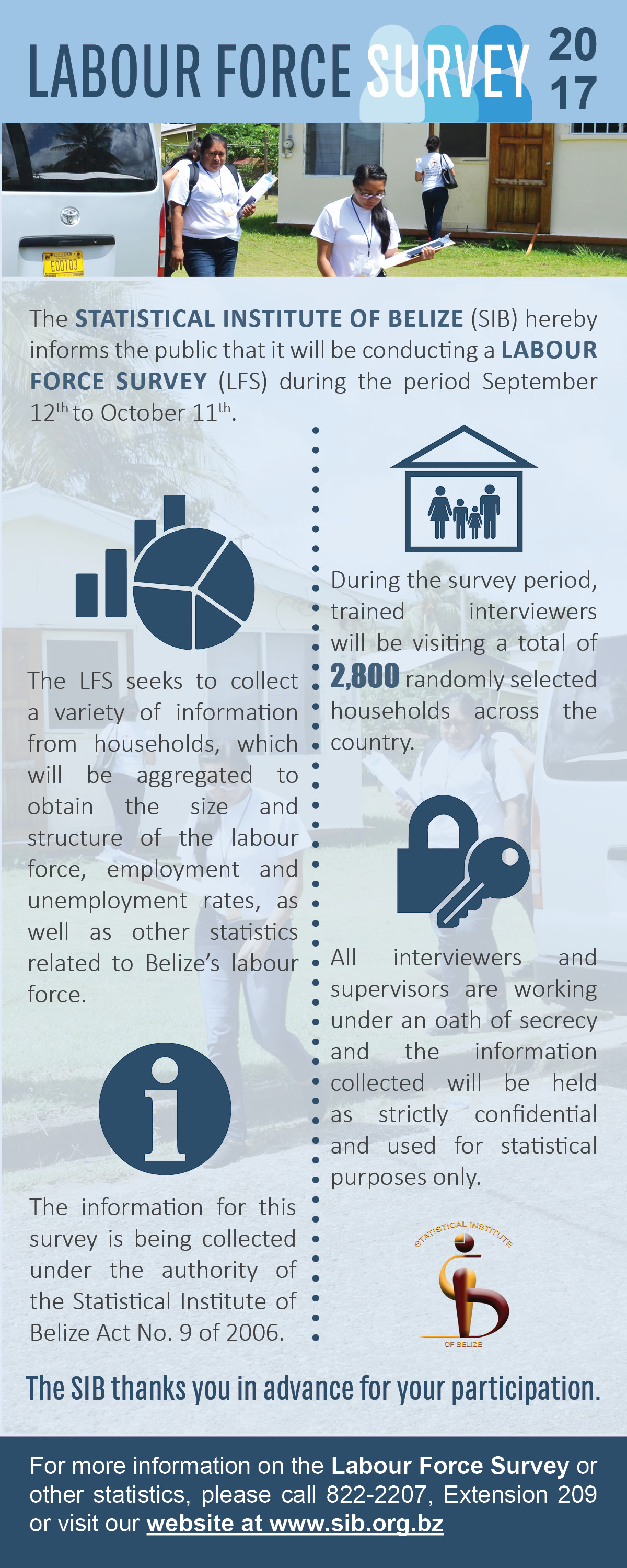The Labour Force Survey (LFS) is a national household survey that is conducted by the Statistical Institute of Belize (SIB) in April and September each year. The survey is carried out during these two periods to capture information at the high and low peaks of employment, respectively. A sample of 2,800 households across the country are randomly selected to participate in the survey each round. Data is collected by trained interviewers who conduct face-to-face interviews using a computerized questionnaire.
The survey questionnaire seeks to capture demographic information about each household member such as their age, sex, ethnicity, educational attainment and so forth. Most questions however, are asked about the employment status of persons 14 years and over as these are the persons that make up the Working-Age Population (WAP). Internationally, the WAP is recognized as persons 15 years and older; however, in the case of Belize, the WAP includes all those persons who are 14 years of age and older. This is in accordance with the Belize Education Act, Chapter 36, of 2000, which dictates the compulsory school age as 5 to 14 years for children.
The information collected from the LFS is used to estimate key economic indicators such as employment and unemployment rates, the level and trend of underemployment, as well as the size and structure of the labour force. Estimates are produced for each round at the national and district level as well as for urban and rural areas at the national level. The information produced from the LFS can be used to improve government employment and human resources policies, as well as for labour market analysis by economists and planners in both the private and public sector.
Data collection for the LFS and all other surveys conducted by the SIB is carried out under the Statistical Institute of Belize Act No. 9 of 2006. All SIB staff are required to sign an oath of secrecy and are issued with an official SIB identification Card. Data collected are held strictly confidential and are used solely for statistical purposes.







